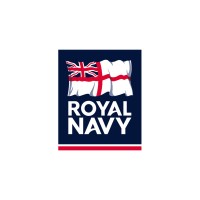
Air Force Space Command Company Cyber Security Posture
af.milAir Force Space Command, activated Sept. 1, 1982, is a major command with headquarters at Peterson Air Force Base, Colo. AFSPC provides military focused space and cyberspace capabilities with a global perspective to the joint warfighting team. People More than 40,000 professionals assigned to 134 locations worldwide. Organization Fourteenth Air Force is located at Vandenberg AFB, Calif., and provides space capabilities for the joint fight through the operational missions of spacelift; position, navigation and timing; satellite communications; missile warning and space control. Twenty-fourth Air Force is located at Joint Base San Antonio - Lackland, Texas, and its mission is to provide combatant commanders with trained and ready cyber forces which plan and conduct cyberspace operations. The command extends, operates, maintains and defends its assigned portions of the Department of Defense network to provide capabilities in, through and from cyberspace. The Space and Missile Systems Center at Los Angeles AFB, Calif., designs and acquires all Air Force and most Department of Defense space systems. It oversees launches, completes on-orbit checkouts and then turns systems over to user agencies. It supports the Program Executive Office for Space on the Global Positioning, Defense Satellite Communications and MILSTAR systems. SMC also supports the Evolved Expendable Launch Vehicle, Defense Meteorological Satellite and Defense Support programs and the Space-Based Infrared System. AFSPC major installations include: Schriever, Peterson and Buckley Air Force Bases in Colorado; Los Angeles and Vandenberg Air Force Bases in California; and Patrick AFB in Florida. Major AFSPC units also reside on bases managed by other commands in New Mexico, Texas, Illinois, Virginia and Georgia. AFSPC manages many smaller installations and geographically separated units in North Dakota, Alaska, Hawaii and across the globe.
AFSC Company Details
air-force-space-command
10,001+ employees
14486
928
Armed Forces
af.mil
Scan still pending
AIR_7653091
In-progress
Between 800 and 900
This score is AI-generated and less favored by cyber insurers, who prefer the TPRM score.
 AFSC Global Score
AFSC Global Score.png)

Air Force Space Command Company Scoring based on AI Models
| Model Name | Date | Description | Current Score Difference | Score |
|---|---|---|---|---|
| AVERAGE-Industry | 03-12-2025 | This score represents the average cybersecurity rating of companies already scanned within the same industry. It provides a benchmark to compare an individual company's security posture against its industry peers. | N/A | Between 800 and 900 |
Air Force Space Command Company Cyber Security News & History
| Entity | Type | Severity | Impact | Seen | Url ID | Details | View |
|---|
Air Force Space Command Company Subsidiaries

Air Force Space Command, activated Sept. 1, 1982, is a major command with headquarters at Peterson Air Force Base, Colo. AFSPC provides military focused space and cyberspace capabilities with a global perspective to the joint warfighting team. People More than 40,000 professionals assigned to 134 locations worldwide. Organization Fourteenth Air Force is located at Vandenberg AFB, Calif., and provides space capabilities for the joint fight through the operational missions of spacelift; position, navigation and timing; satellite communications; missile warning and space control. Twenty-fourth Air Force is located at Joint Base San Antonio - Lackland, Texas, and its mission is to provide combatant commanders with trained and ready cyber forces which plan and conduct cyberspace operations. The command extends, operates, maintains and defends its assigned portions of the Department of Defense network to provide capabilities in, through and from cyberspace. The Space and Missile Systems Center at Los Angeles AFB, Calif., designs and acquires all Air Force and most Department of Defense space systems. It oversees launches, completes on-orbit checkouts and then turns systems over to user agencies. It supports the Program Executive Office for Space on the Global Positioning, Defense Satellite Communications and MILSTAR systems. SMC also supports the Evolved Expendable Launch Vehicle, Defense Meteorological Satellite and Defense Support programs and the Space-Based Infrared System. AFSPC major installations include: Schriever, Peterson and Buckley Air Force Bases in Colorado; Los Angeles and Vandenberg Air Force Bases in California; and Patrick AFB in Florida. Major AFSPC units also reside on bases managed by other commands in New Mexico, Texas, Illinois, Virginia and Georgia. AFSPC manages many smaller installations and geographically separated units in North Dakota, Alaska, Hawaii and across the globe.
Access Data Using Our API

Get company history
.png)
AFSC Cyber Security News
Data Integrity, Not Cyber Attacks, Are What Most Worry Space Command’s Cyber Boss
Even the name of the chief information officer's organization reflects the key role of the cyber domain for Space Command. In most military ...
Cyber Threats Loom Large Over U.S. Space Systems, Warns Pentagon Official
Cyber warfare is reshaping the battlefield — and America's space systems and defense industry could be exposed if action isn't taken.
New Department of Air Force partnership brings cyber, space and information units closer
The 16th Air Force announced in January that it is partnering with Space Operations Command (SpOC) in order to integrate space-based capabilities into all of ...
Space Force extends Sev1Tech contract to continue work on meshONE-T for DAF Battle Network
“Since its prototype phase began in September 2021, meshONE-T has demonstrated significant operational utility for both the USSF and the U.S. ...
Integrating space into Information Warfare
As the U.S. Air Force's competition force, 16th Air Force (Air Forces CYBER) cultivates air and space superiority by integrating space into ...
ONE GUARDIAN: Providing A Cyber Capability Focus
The growing importance of cyber operations within the U.S. Space Force is driving a required focus on space systems at the Special Access ...
DOD Officials See Progress in Tackling Weapons Cybersecurity but a Long Way to Go
The Army has blocked the Air Force generative AI chatbot, NIPRGPT, from its networks, citing cybersecurity and data governance and highlighting ...
Cybersecurity firm Xage gets $17 million contract to protect Space Force networks
WASHINGTON — The cybersecurity firm Xage Security won a $17 million contract to protect the Space Force's Space Systems Command networks for ...
Space Command to launch Joint Cyber Center
The unified combatant command overseeing the military's joint operations in space is working to stand up a Joint Cyber Center, its commander ...

AFSC Similar Companies

British Army
Joining the British Army, you’ll get much more from life than you ever would with a civilian career – you’ll have the opportunity to do something that really matters, with a team that are like family to you. The sense of belonging in the Army is next level: when you’ve trained with each other and ov

Belgian Defence
Defence currently has a thousand soldiers deployed around the world on average, generally in coordination with other international partners. After all, we not only carry out peace-making and keeping operations or humanitarian efforts. Our soldiers are professional bridge-builders who intervene in co

Ministerie van Defensie
Het Ministerie van Defensie bestaat uit de Koninklijke Marine, de Koninklijke Landmacht, de Koninklijke Luchtmacht, de Koninklijke Marechaussee, het Commando DienstenCentra en de Defensie Materieel Organisatie. Aan het hoofd van de Bestuursstaf (het departement) staat de minister van Defensie. We

Royal Navy
At sea, on land and in the air. The Royal Navy is made up of five arms. The might of ships in the Surface Fleet, the aerial strength that is the Fleet Air Arm, the covert Submarine Service, the elite and amphibious Royal Marines, and the civilian fleet central to our effectiveness, the Royal Fleet

United States Army Reserve
The U.S. Army Reserve's mission, under Title 10 of the U.S. code, is to provide trained and ready Soldiers and units with the critical combat service support and combat support capabilities necessary to support nation strategy during peacetime, contingencies and war. The Army Reserve is a key elemen

Forsvaret
Forsvaret er en af Danmarks største og mest komplekse offentlige institutioner med ansatte inden for mange forskellige faggrupper – både militære og civile. Forsvaret skal med militære midler kunne bidrage til løsning af konfliktforebyggende, fredsbevarende, fredsskabende, humanitære og andr

Frequently Asked Questions
Explore insights on cybersecurity incidents, risk posture, and Rankiteo's assessments.
AFSC CyberSecurity History Information
How many cyber incidents has AFSC faced?
Total Incidents: According to Rankiteo, AFSC has faced 0 incidents in the past.
What types of cybersecurity incidents have occurred at AFSC?
Incident Types: The types of cybersecurity incidents that have occurred include .
Incident Details
What are the most common types of attacks the company has faced?
Additional Questions
What Do We Measure?
















Every week, Rankiteo analyzes billions of signals to give organizations a sharper, faster view of emerging risks. With deeper, more actionable intelligence at their fingertips, security teams can outpace threat actors, respond instantly to Zero-Day attacks, and dramatically shrink their risk exposure window.
These are some of the factors we use to calculate the overall score:
Identify exposed access points, detect misconfigured SSL certificates, and uncover vulnerabilities across the network infrastructure.
Gain visibility into the software components used within an organization to detect vulnerabilities, manage risk, and ensure supply chain security.
Monitor and manage all IT assets and their configurations to ensure accurate, real-time visibility across the company's technology environment.
Leverage real-time insights on active threats, malware campaigns, and emerging vulnerabilities to proactively defend against evolving cyberattacks.




